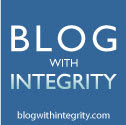
I thought this section might be easier to understand since Group 2 has only 2 entities (Person and Corporate Body) versus 4 entities in Group 1 (Work, Expression, Manifestation and Item). The section was shorter, but not really much easier to absorb. And a third Entity – Family – got tossed in there, too. As author Robert Maxwell explained, Family is “not found in FRBR, [but] is defined in FRAD”. FRAD stands for Functional Requirements for Authority Data and is related to FRBR.
With Group 2 Entities we begin to see the relationship aspects of FRBR because a Work can be created by a Person or a Corporate Body. It can be about a Person or a Corporate Body. An Expression can be translated by a Person. A Manifestation can be published by a Corporate Body. An Item can be owned by a Person or a Corporate Body. Several of the above statements are often true simultaneously.
Group 2 Entities can also have relationships with each other. A Person can be part of a musical group which is a Corporate Body. A Person can write under multiple names. And (looking at FRAD) a person can be a member of a Family.
This is the easy part of FRBR’s Group 2 Entities. Things get more complicated once the discussion turns to the Attributes of each entity. Attributes of Person are Name of Person, Dates of Person (as in birth, death, or when the person was actively creative), Title of Person (Doctor, General, etc.), and “other designation associated with the person.” FRAD, however, delineates slightly different attributes of a Person and more of them (details like place of birth, gender, language) and Maxwell constantly compares FRBR to FRAD. Keeping them straight can create headaches.
What is really interesting about all of this is something Diane Hillman talked about in a program at the 2008 Mass Library Association Conference and again at NELINET. As a cataloger creates a bibliographic record, he/she does not have to determine (and key in) the “one authorized form” of a person’s name. The cataloger will be able to link that “author” line to a registry of names that will include more information than our current Name Authority Files. The same for publisher: No need to worry about which words (if any) to abbreviate, simply link to the registry of Corporate Names.
Of course, this assumes an infrastructure that we don’t exactly have yet. But as more registries are developed and linking rather than keying in becomes the norm, our information (and therefore our catalogs) will show relationships between and among works, expressions, manifestations, items, people and corporate bodies, not merely individual bibliographic records.


No comments:
Post a Comment